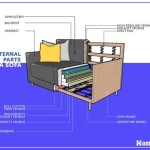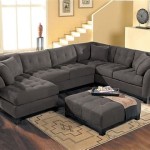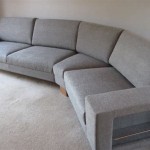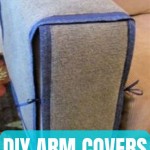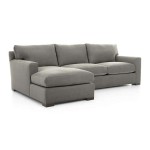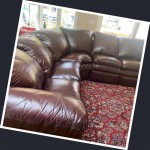Soft Line Leather Sofa Reviews: A Guide for Indonesian Consumers
Leather sofas represent a significant investment in home furnishing, offering a blend of comfort, durability, and aesthetic appeal. For Indonesian consumers, selecting the right leather sofa requires careful consideration of various factors, including climate, usage patterns, and available space. This analysis focuses on "Soft Line" leather sofas, examining their features, potential benefits, and drawbacks specific to the Indonesian market. It aims to provide a comprehensive overview to aid informed decision-making.
Soft Line is not a specific brand but rather a descriptor indicating the type of leather and construction used in the sofa. “Soft Line” generally refers to sofas that prioritize comfort and a supple feel through the use of specific leather tanning processes and upholstery techniques. These factors influence the longevity, maintenance requirements, and overall suitability of the sofa in Indonesian households.
Understanding Leather Types and Their Relevance to the Indonesian Climate
Leather used in sofas can be broadly categorized into several types, each with distinct characteristics that affect its performance in a tropical climate like Indonesia. Top-grain leather, derived from the outermost layer of the hide, is known for its durability and resistance to wear and tear. Full-grain leather, the highest quality, retains its natural markings and develops a patina over time. Split-grain leather, taken from the lower layers, is less durable and often coated with a finish to improve its appearance but may be less breathable.
In Indonesia's humid climate, breathability is a crucial factor. Sofas made with full-grain or top-grain leather, which allow for greater air circulation, can be more comfortable in the long run, reducing the likelihood of excessive sweating or discomfort. Split-grain leather, due to its coating, may feel less breathable and can become sticky or uncomfortable in hot weather. It’s crucial to inquire about the leather grade offered by the manufacturer or retailer, understanding that lower grades might compromise comfort and longevity.
Furthermore, the tanning process significantly impacts the leather's resilience. Vegetable-tanned leather, a natural process, tends to be more breathable and environmentally friendly but can be more susceptible to staining. Chrome-tanned leather, a faster and more common process, offers greater water resistance and colorfastness, but it may not be as breathable. Therefore, consumers need to balance the advantages and disadvantages of each tanning method based on their individual preferences and lifestyle.
The finish applied to the leather also influences its suitability for the Indonesian environment. A protective finish can guard against spills and stains, which is particularly beneficial in households with children or pets. However, it can also reduce breathability. Balancing protection with comfort is a key consideration when evaluating “Soft Line” leather sofas.
Evaluating Construction Quality and Frame Materials
The longevity of any sofa, including "Soft Line" leather sofas, hinges on the quality of its underlying construction. The frame, support system, and cushioning materials all contribute to the overall durability and comfort. A solid hardwood frame, typically made of kiln-dried wood, is preferable for its strength and resistance to warping. Softwood frames, while less expensive, may not provide the same level of long-term support.
The support system under the cushions can consist of sinuous springs, eight-way hand-tied springs, or webbing. Sinuous springs, also known as zig-zag springs, are a common and cost-effective option, providing adequate support for general use. Eight-way hand-tied springs, considered a premium option, offer superior support and conform to the body's contours. Webbing, made of interwoven fabric straps, is a less expensive alternative but may sag over time.
The cushioning material profoundly affects the sofa's comfort and longevity. High-density foam provides firm support and resists compression, ensuring the sofa retains its shape over time. Down and feather cushions offer a luxurious feel but require more maintenance and may flatten more quickly. A combination of foam and down, often used in "Soft Line" sofas, seeks to balance comfort and durability. In tropical climates, consider the potential for mold or mildew growth within the cushioning materials. Choose materials that are treated with anti-microbial agents if humidity is a significant concern.
The stitching quality is another indicator of overall craftsmanship. Tight, even stitching ensures the leather panels are securely joined and prevents seams from splitting or unraveling. Examine the stitching closely, paying attention to the corners and areas that experience the most stress. The quality of the zippers and hardware, such as buttons or studs, also reflects the manufacturer's attention to detail.
Consumers in Indonesia should carefully inspect the construction of any "Soft Line" leather sofa before purchase. Inquire about the frame material, support system, and cushioning composition. A well-constructed sofa will provide years of comfortable use, while a poorly constructed one may require frequent repairs or replacement.
Considering Design and Style in the Indonesian Context
The design and style of a "Soft Line" leather sofa should complement the existing décor and architectural style of the home. In Indonesia, where both traditional and modern aesthetics are prevalent, choosing a sofa that blends seamlessly with the surrounding environment is essential. Consider the size and layout of the living space when selecting a sofa. A large, sectional sofa may overwhelm a small room, while a loveseat may appear too small in a spacious living area.
The color of the leather also plays a crucial role in creating the desired ambiance. Light-colored leather can brighten up a room and is well-suited to modern, minimalist interiors. Dark-colored leather, such as brown or black, can add a touch of sophistication and elegance to more traditional settings. Consider the potential for fading in direct sunlight, which is common in Indonesian homes. Leather treated with UV-resistant dyes will retain its color longer.
The design of a “Soft Line” sofa can range from classic to contemporary. Chesterfield sofas, with their button-tufted backs and rolled arms, offer a timeless appeal. Lawson sofas, with their straight lines and low arms, are a versatile choice that complements a variety of styles. Mid-century modern sofas, with their sleek lines and minimalist design, are becoming increasingly popular in Indonesia.
Beyond aesthetics, consider the practical aspects of the design. Sofas with removable cushion covers are easier to clean and maintain. Sofas with built-in storage can be a valuable asset in smaller spaces. The height of the backrest and the depth of the seat also affect comfort. Test the sofa thoroughly before purchasing to ensure it meets your individual needs and preferences.
In the Indonesian context, the integration of traditional elements into the design can create a unique and harmonious living space. Consider incorporating local textiles, such as batik or ikat, into the throw pillows or cushions. Pairing a "Soft Line" leather sofa with wooden furniture or decorative items can add warmth and character to the room.
When evaluating a "Soft Line" leather sofa's design, it's imperative to consider the long-term aesthetic and practical implications within the specific Indonesian setting. Selecting a style that harmonizes with the existing décor, considers the available space, and meets the occupant's comfort needs will ensure a satisfactory and enduring investment.
Maintenance and Care Specifically for Tropical Environments
Maintaining a leather sofa in a tropical environment like Indonesia requires specific strategies to combat the effects of humidity, heat, and sunlight. Regular cleaning is crucial to prevent the buildup of dust, dirt, and grime. Dust the sofa weekly with a soft cloth or vacuum with a brush attachment. Avoid using harsh chemicals or abrasive cleaners, which can damage the leather's finish.
Leather conditioners should be applied periodically to keep the leather supple and prevent it from drying out and cracking. Choose a leather conditioner specifically formulated for the type of leather used on the sofa. Follow the manufacturer's instructions carefully and avoid over-conditioning, which can make the leather greasy.
Protecting the sofa from direct sunlight is essential to prevent fading and discoloration. Position the sofa away from windows or use curtains or blinds to filter the sunlight. UV-resistant leather protectors can also help to minimize fading.
Humidity can promote the growth of mold and mildew on leather sofas. Ensure adequate ventilation in the room to reduce humidity levels. Consider using a dehumidifier to control moisture in particularly humid areas. If mold or mildew does appear, clean it immediately with a mild soap and water solution. Dry the area thoroughly to prevent regrowth.
Spills and stains should be addressed promptly to prevent permanent damage. Blot the spill with a clean, absorbent cloth. Avoid rubbing, which can spread the stain. For stubborn stains, consult a professional leather cleaner.
Scratches and scuffs can be minimized with regular maintenance. Leather creams and conditioners can help to restore the leather's appearance and protect it from further damage. For more significant scratches, consider consulting a professional leather repair specialist.
In addition to regular cleaning and conditioning, consider using protective covers or throws to shield the sofa from everyday wear and tear. This is particularly beneficial in households with children or pets. Regularly rotate the cushions to ensure even wear and prevent indentations.
Proper maintenance and care will significantly extend the lifespan of a "Soft Line" leather sofa in the Indonesian environment. Following these guidelines will help to preserve its beauty and comfort for years to come.
Addressing Potential Drawbacks and Considerations Specific to Indonesia
While "Soft Line" leather sofas offer numerous benefits, Indonesian consumers should be aware of potential drawbacks and considerations specific to the local market. The cost of leather sofas can be significantly higher than that of fabric sofas, making them a less accessible option for some households. The availability of high-quality leather sofas may also be limited in certain areas, requiring consumers to travel to larger cities or purchase online.
The heat and humidity of Indonesia can pose challenges for leather sofas. Leather can feel sticky and uncomfortable in hot weather, and humidity can promote the growth of mold and mildew. Choosing breathable leather types, such as full-grain or top-grain, and ensuring adequate ventilation can help to mitigate these issues.
The prevalence of pests, such as termites and cockroaches, in Indonesia can also pose a threat to leather sofas. Termites can damage the frame of the sofa, while cockroaches can infest the cushioning and leather itself. Regular pest control measures are essential to protect the sofa from damage.
The availability of skilled leather repair and maintenance services may be limited in some areas of Indonesia. Consumers should inquire about the availability of such services before purchasing a leather sofa. If professional services are not readily available, consider learning basic leather care techniques to address minor scratches and stains.
Cultural preferences and lifestyle factors can also influence the suitability of "Soft Line" leather sofas. In some Indonesian cultures, sitting on the floor is a common practice, which may reduce the use of a sofa. Households with young children or pets may also find that leather sofas require more frequent cleaning and maintenance.
Before investing in a "Soft Line" leather sofa, Indonesian consumers should carefully weigh the potential benefits and drawbacks in the context of their specific needs and circumstances. Considering factors such as climate, pest control, lifestyle, and available resources will help to ensure a satisfactory and enduring investment.

Softline 4 Piece Leather Sectional In Dallas Chestnut

Softline 4 Piece Leather Sectional In Dallas Chestnut

Timeless Luxury Explore Our Collection Of Leather Sofas

Timeless Luxury Explore Our Collection Of Leather Sofas

Joy Three Seater Recliner Sofa Set

Memphis Sofa Stickley Brand

Nora 73 Inch 3 Seater Sofa Couch Hand Stitched Cushion Pillows Vonanda

L Shaped Sofas Modern Luxury Design Soft Circular Brown Leather Sofa Furnitures

Omnia Leather Furniture

Timeless Luxury Explore Our Collection Of Leather Sofas


